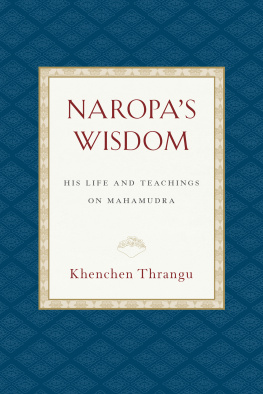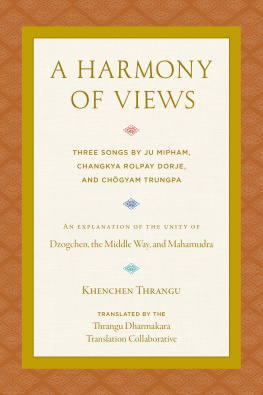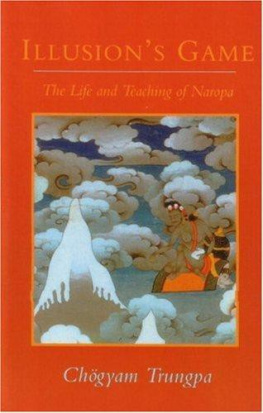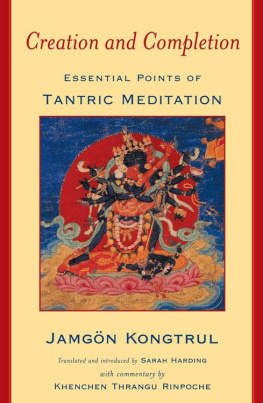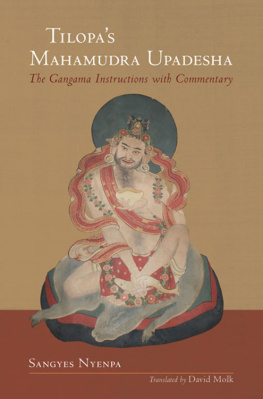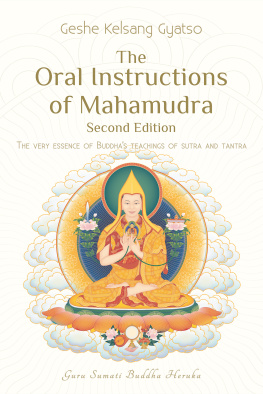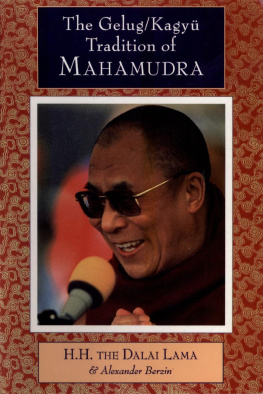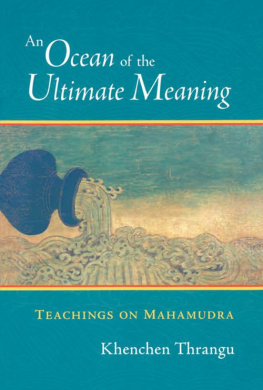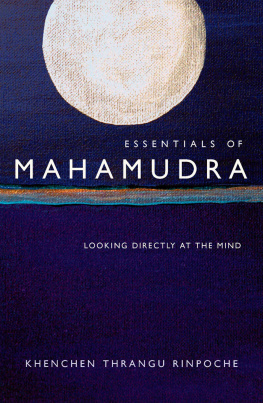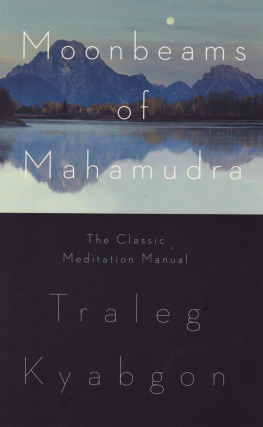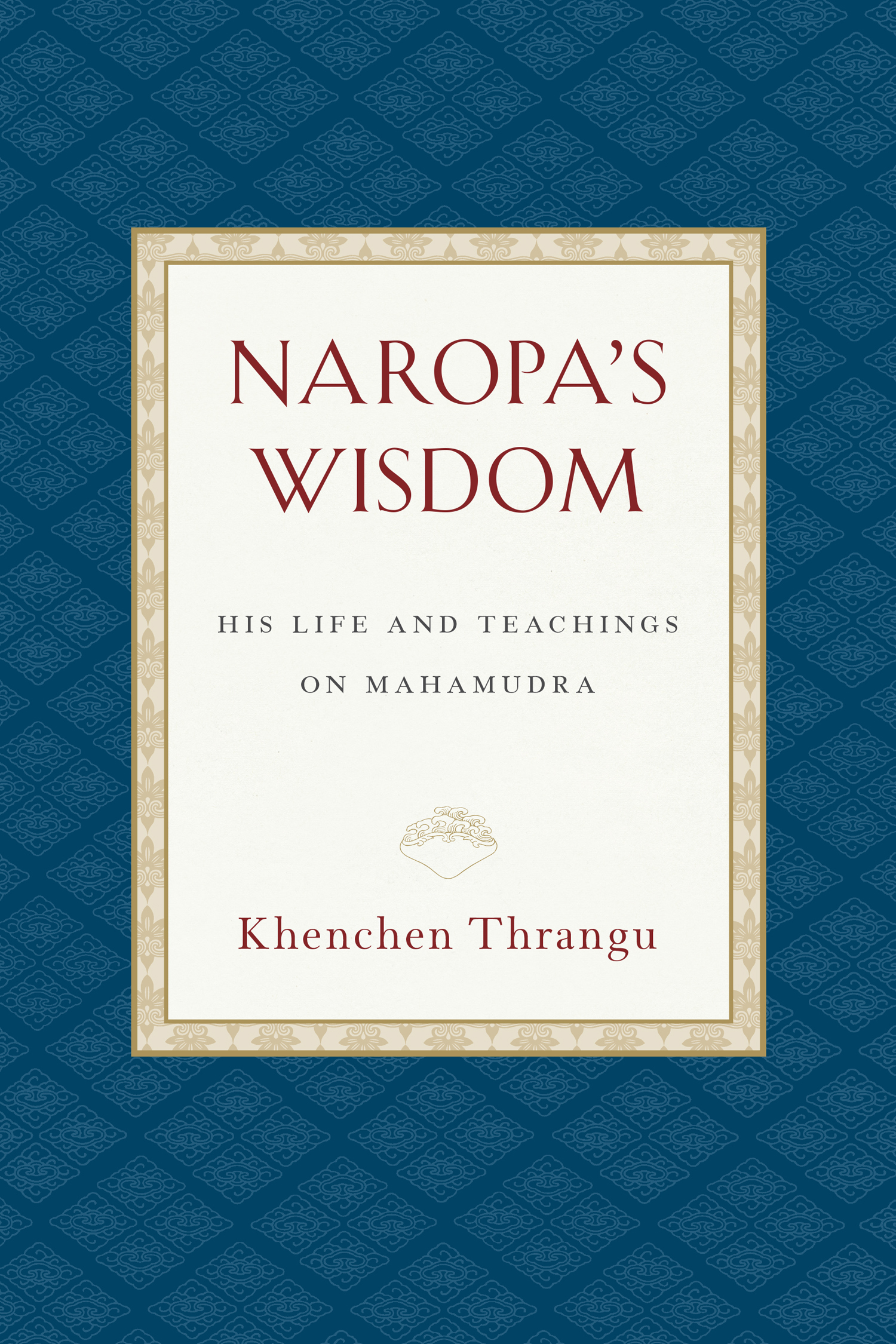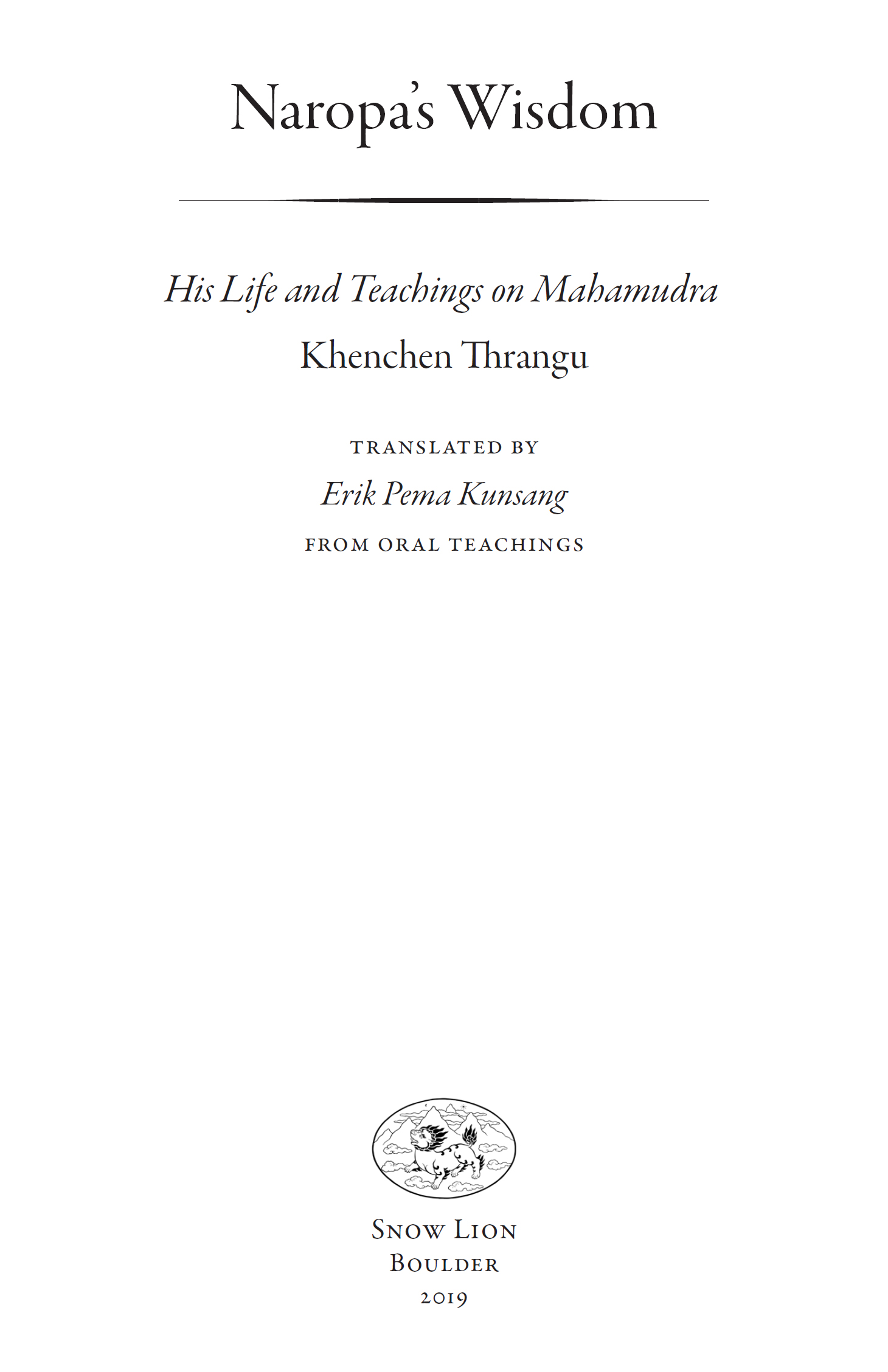E DITORS P REFACE

Traditionally, the Buddhist teachings are presented as beginning with the enlightenment of the Buddha under the Bodhi tree. For the next forty years of his life, the Buddha gave the teachings that we now call the first turning of the wheel of Dharma. The most important of these teachings were, of course, the Four Noble Truths and the selflessness, or insubstantiality, of persons. The numerous discourses he gave to his students were later called the Foundation teachings. About five hundred years after the Buddha entered parinirvana, there was a great blossoming of Buddhist teachings in India that emphasized compassion for all beings (bodhichitta) and the extraordinary work of Nagarjuna on the emptiness of outer phenomena. These teachings were important because in order to help sentient beings achieve enlightenmentawakening from samsaraone must understand both conventional and ultimate truth. These Mahayana teachings became known as the second turning of the wheel of Dharma, and they then spread across Asia to China and Japan. Finally, a few hundred years later, there developed the profound teachings of Asanga that emphasized buddha nature and luminous clarity, which later became known as the third turning of the wheel of Dharma. With this third turning also came the development of tantric teachings that emphasized nonconceptual meditation and interacting with a vast variety of deities through practices called sadhanas.
By the time of Naropa, almost 1,500 years after the passing away of the Buddha, almost all the teachings of the Buddha had been written down, categorized, and formulated as definite tenets. His teachings were also accompanied by many great commentaries written by famous Buddhist scholars. Large monasteries in India had been established that contained monks from many different countries and from all three turnings of the wheel of Dharma. Some of these monasteries were also universities where there were Hindu scholars studying the Vedas and classes in Sanskrit literature and grammar, rhetoric, composition, and so on. These monastic universities were centers of academic Buddhism, where the subtle points of the meaning of emptiness and other philosophical concepts were taught, discussed, and debated.
When we examine the life of Naropa, who lived in India during the eleventh century, we find that he began his Buddhist practice as an ordained monk, following the rules of the Vinaya laid down by the sutra teachings of the Buddha in the Foundation path. He then went to the largest monastic university of the time, Nalanda, and mastered the Mahayana with such proficiency that he became one of Nalandas four abbots (who were called the gatekeepers). There he engaged in learning and debating the vast academic literature of the second turning of the wheel of Dharma. One day, he was approached by a dakini, or wisdom being, who told him that to reach full enlightenment, he must go into the Indian jungle, search out a guru named Tilopa, and practice the tantric path. He did so, and after reaching the highest level of realization transmitted by Tilopa, he gave many important teachings to his Tibetan disciple Marpa, who in turn also practiced each sadhana until he had completely mastered it, and then brought them to Tibet, where he translated them into Tibetan.
N AROPA AND M AHAMUDRA P RACTICE
When Naropa took mahasiddha Tilopa as his root guru, he began to practice Mahamudra meditation. Mahamudra is the principal meditation of the Kagyu lineage of Tibetan Buddhism. These teachings went contrary to current Buddhist practice at the time because Mahamudra does not involve performing elaborate sadhanas or studying the teachings on emptiness. Rather, in Mahamudra, one must simply look directly into ones mind. The first written teachings on Mahamudra that we have are attributed to Saraha, who lived approximately two hundred years before Tilopa. Tilopa then passed these teachings on to Naropa on the banks of the Ganges River via the Ganges Mahamudra. Naropa then expanded on these Mahamudra teachings in the two dohas discussed in this book, which he then passed on to Marpa, who took them to Tibet and helped found the Kagyu lineage. These two dohasThe View, Concisely Put and The Summary of Mahamudracriticize the approach of academic Buddhism because it relies on the intellectual mind instead of looking directly at the minds nature; he also criticizes the sadhana approach for much the same reasons. This is why Naropa, who was, after all, an outstanding scholar of academic Buddhism, states in the first few verses of The Summary of Mahamudra, which is found in part 3 of this book, that mere conceptual understanding of Buddhism will not lead to full enlightenment.
T HE S IX D HARMAS OF N AROPA
Besides transmitting the Mahamudra and deity practices, Naropa also transmitted the Six Dharmas of Naropa.
T HE L IFE OF N AROPA
In this teaching on Naropa, Thrangu Rinpoche had only a limited time to teach and so he decided not to give any details of Naropas life before the time Naropa began looking for Tilopa. Also these accounts are difficult to present because the different accounts of Naropas life often dont agree with each other. Since it may be useful, I will present some of the details about Naropas early life here, based mostly on Herbert Guenthers translation of Lhatsun Rinchen Namgyals Biography of Naropa.
Naropa was born in 956 in Bengal, an area in eastern India, which was also the home of Saraha and Tilopa. and at the age of eleven he went to study Buddhism in Kashmir (an area of great learning in northern India). Naropa spent three years with many great scholars studying the five branches of learningarts, medicine, grammar, epistemology, and rhetoricabsorbing Buddhist philosophy and practices.

